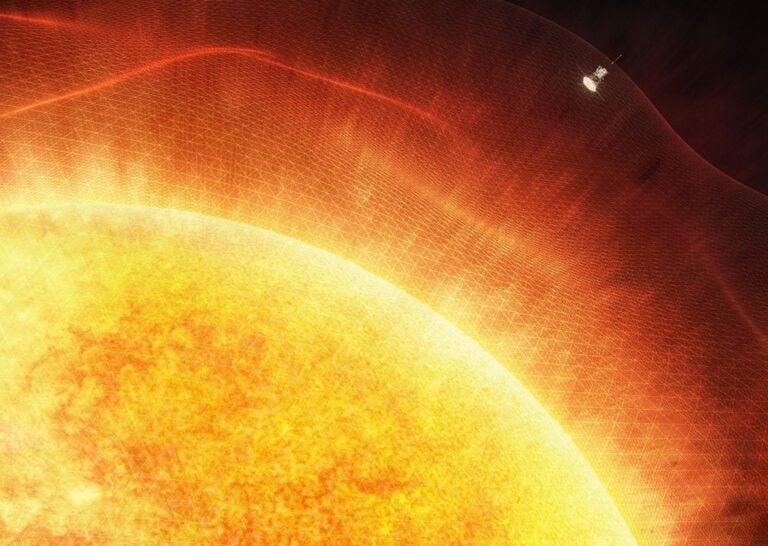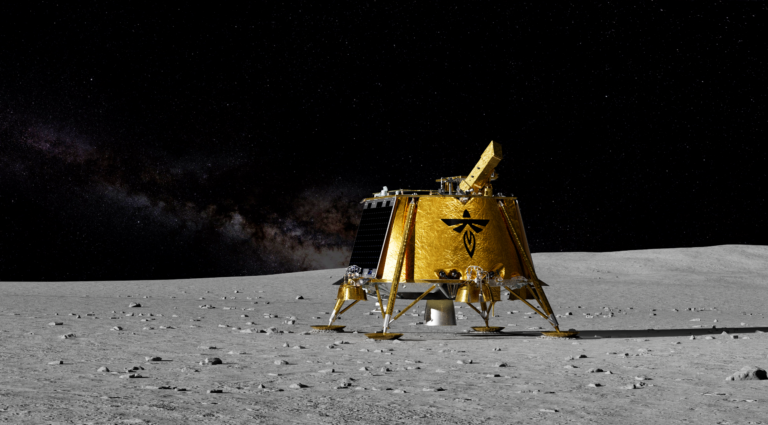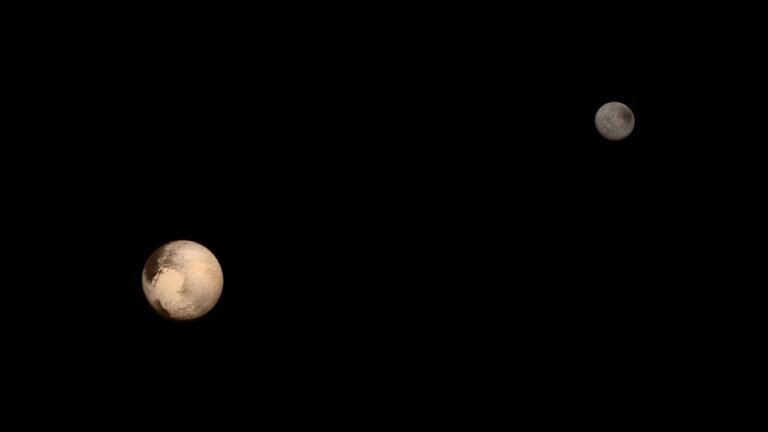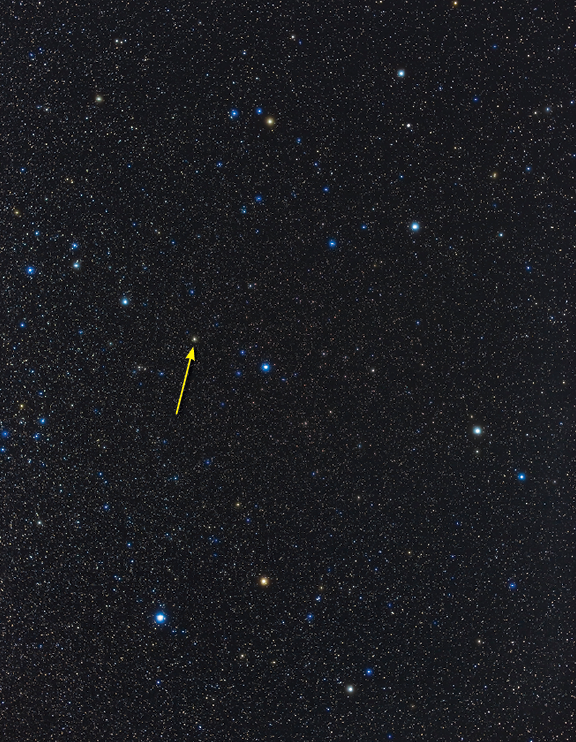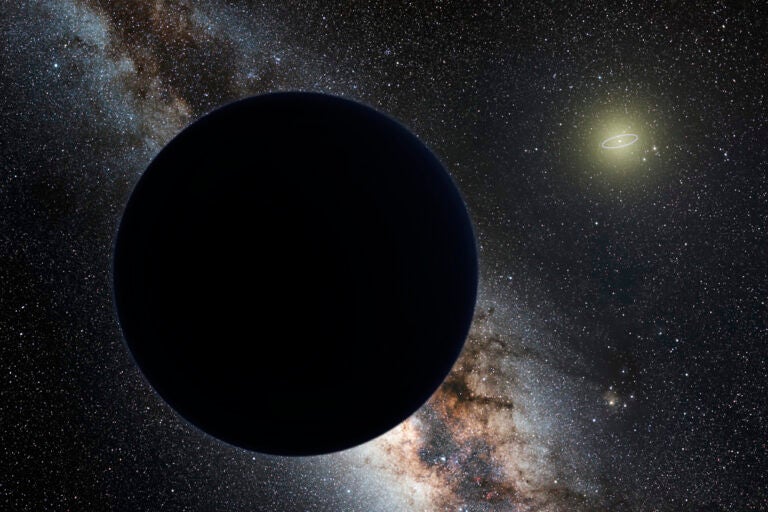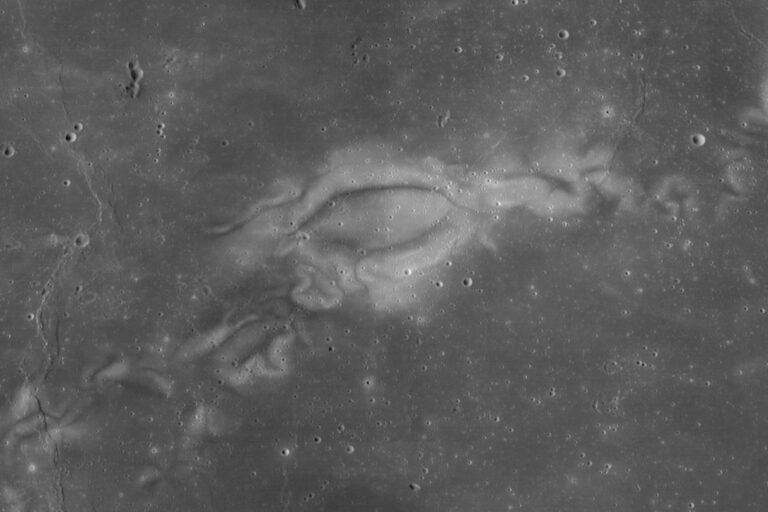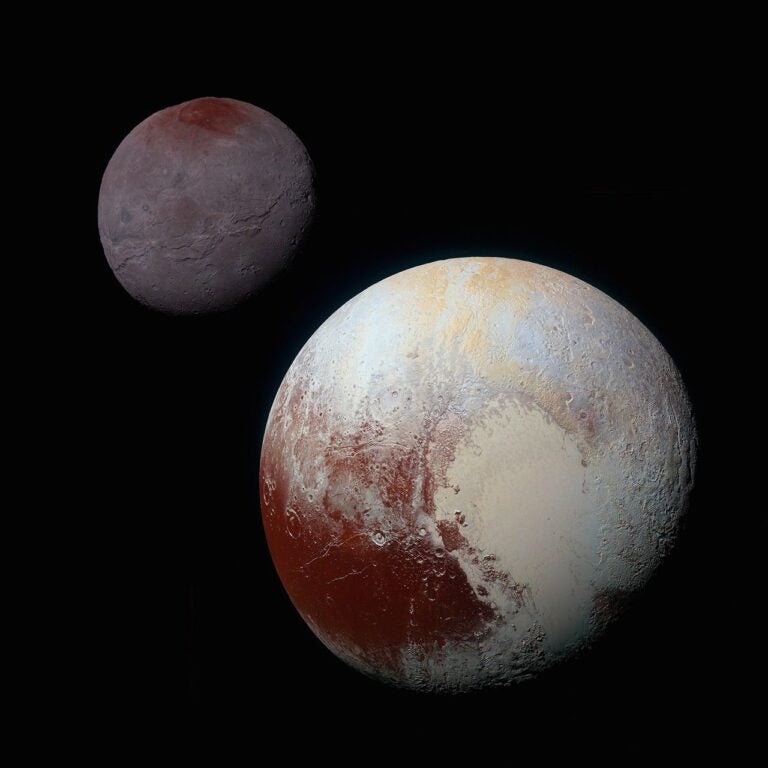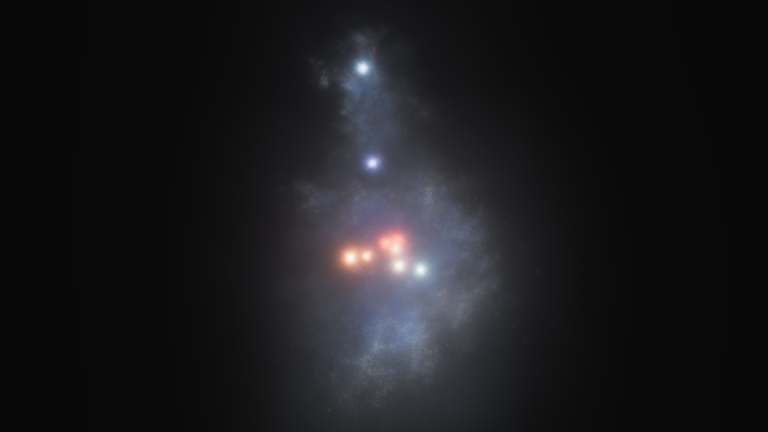After 8 years and repeated photographs of a nearby star in hopes of finding planets, University of California, Berkeley, astronomer Paul Kalas finally has his prize: the first visible-light snapshot of a planet outside our solar system.
Astronomy.com exclusive
Associate Editor Daniel Pendick spoke with NASA scientist Marc Kuchner about this exciting discovery. Kuchner works in the Exoplanets and Stellar Astrophysics Laboratory at Goddard Space Flight Center in Greenbelt, Maryland. Check out Pendick’s blog post “Fomalhaut exoplanet discovery Q&A” for Kuchner’s unique perspective.
Only 25 light-years from Earth, the planet — probably close to the mass of Jupiter — orbits the star Fomalhaut at a distance about four times that between Neptune and the Sun. Formally known as Fomalhaut b, the planet could have a ring system about the dimension of Jupiter’s early rings, before the dust and debris coalesced into the four Galilean moons.
The planet’s existence was suspected in 2005, when images Kalas took with the Hubble Space Telescope’s Advanced Camera for Surveys showed a sharply defined inner edge to the dust belt around Fomalhaut, in the southern constellation Piscus Austrinus the Southern Fish. The sharp edge and off-center belt led to Kalas to suspect that a planet in an elliptical orbit around the star was shaping the inner edge of the belt, much like Saturn’s moons groom the edges of its rings.
“The gravity of Fomalhaut b is the key reason that the vast dust belt surrounding Fomalhaut is cleanly sculpted into a ring and offset from the star,” Kalas said.
“It will be hard to argue that a Jupiter-mass object orbiting an A star like Fomalhaut is anything other than a planet,” said coauthor James R. Graham, professor of astronomy at University of California, Berkeley. “That doesn’t mean it’s exactly what we expected when we went hunting for planets in this system.”
The discovery will be reported November 14 on Science Express, an online site that posts articles in advance of their print publication in the journal Science.
The Science paper is complemented by an article to appear in The Astrophysical Journal (ApJ) that analyzes the interaction between the planet and the dust belt surrounding Fomalhaut and cinches the estimation of the planet’s mass.
“Every planet has a chaotic zone, which is basically a swath of space that encloses the planet’s orbit and from which the planet ejects all particles,” said Eugene Chiang, a University of California, Berkeley, associate professor of astronomy and first author of the ApJ paper. “This zone increases with the mass of the planet so, given the size of the chaotic zone around Fomalhaut b, we can estimate that its likely mass is in the vicinity of one Jupiter mass.”
Kalas, Graham, Chiang, and University of California, Berkeley, graduate student Edwin S. Kite are coauthors of both papers, along with Mark Clampin of the Goddard Space Flight Center in Greenbelt, Maryland. The other authors of the Science paper are Michael P. Fitzgerald of the Institute of Geophysics & Planetary Science at Lawrence Livermore National Laboratory, and John Krist and Karl Stapelfeldt of the Jet Propulsion Laboratory in Pasadena, California.
Kalas used early optical CCD technology to look for dust surrounding Fomalhaut 15 years ago. In 1998, sub millimeter-wavelength radio observations of the disk showed that cold dust was distributed in a ring around the central star, much like the ring of comets called the Kuiper Belt in our solar system.
He now has two photographs of the planet, taken in 2004 and 2006, that show its movement during a 21-month period fits what would be expected from a planet orbiting Fomalhaut every 872 years at a distance of 119 astronomical units, or 11 billion miles. One astronomical unit (AU) is the average distance between the Earth and the Sun, or 93 million miles.
“It’s a profound and overwhelming experience to lay eyes on a planet never before seen,” said Kalas.
Because of the planet’s relatively low mass and distant orbit, it cannot be detected by measuring the tiny wobble a planet induces in its star. Astronomers hoping to photograph extrasolar planets have taken a different approach by looking in the infrared at young stars in hopes of detecting the warm glow from cooling planets. Fomalhaut b is not seen in the infrared, however. Kalas snapped photos in visible light, which for most planets would be impossible because of the star’s bright glare. Even with Hubble’s coronagraph to block the star’s light, the new planet would not have been detected if it had been much closer to its star, or much dimmer.
“To make this discovery at optical wavelengths is a complete surprise,” he said. “If we’re seeing light in reflection, then it must be because Fomalhaut b is surrounded by a planetary ring system so vast it would make Saturn’s rings look pocket-sized by comparison. Fomalhaut b may actually show us what Jupiter and Saturn resembled when the solar system was about
a hundred million years old.”
Fomalhaut is about 200 million years old and will burn out in about a billion years, making it a short-lived star compared to our Sun, which is now about 4.5 billion years old and expected to burn another 5 billion years.
The researchers are awaiting repair of Hubble’s Advanced Camera for Surveys and the Near Infrared Camera to resume their observations to confirm the planet’s orbit, discover the source of its unusual brightness in the visible, and perhaps find other planets.
“There is plenty of empty space between Fomalhaut b and the star for other planets to happily reside in stable orbits,” Kalas said. “We’ll probably have to wait for the James Webb Space Telescope to give us a clear view of the region closer to the star where a planet could host liquid water on the surface.”


